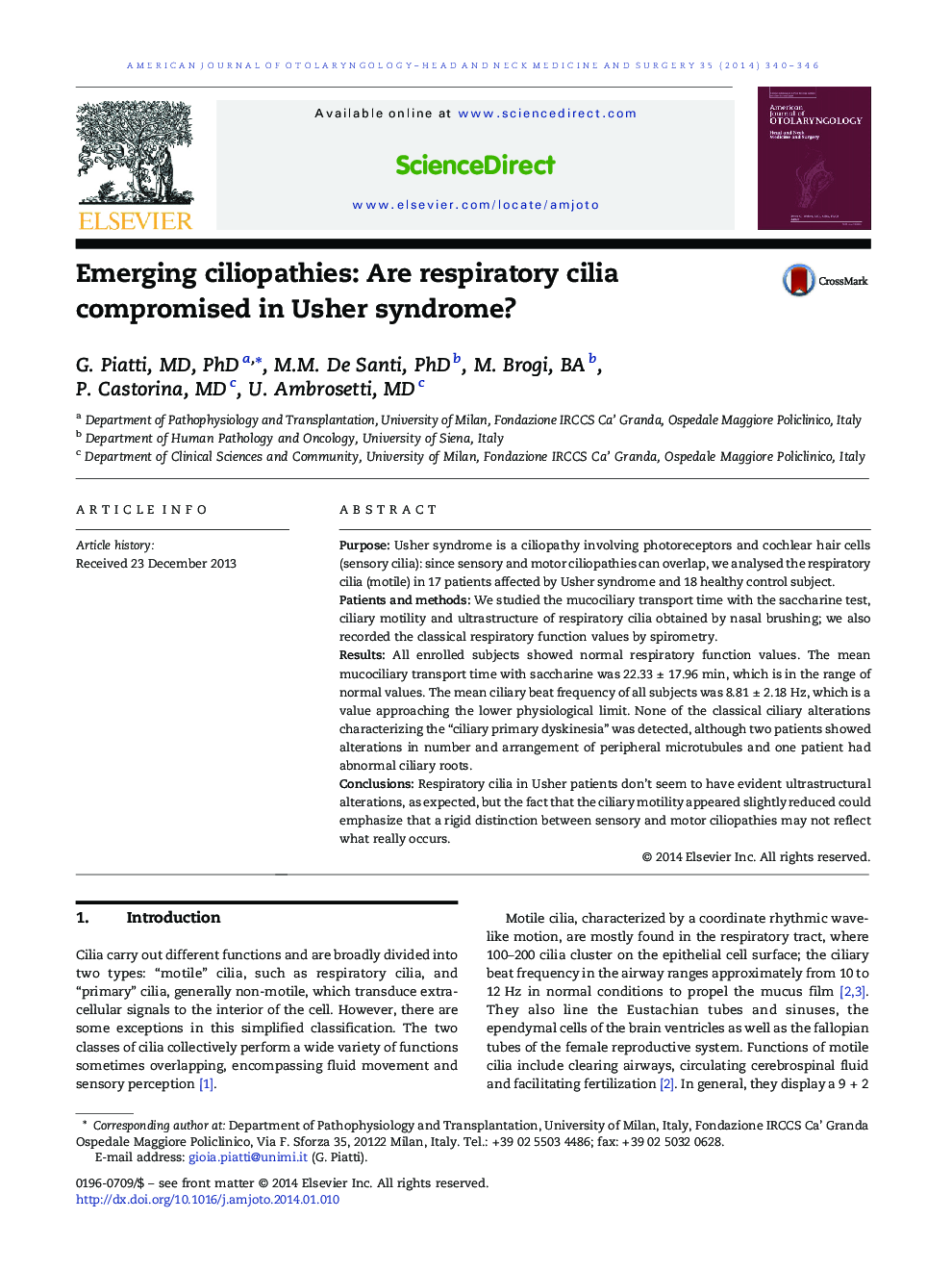| Article ID | Journal | Published Year | Pages | File Type |
|---|---|---|---|---|
| 4103239 | American Journal of Otolaryngology | 2014 | 7 Pages |
PurposeUsher syndrome is a ciliopathy involving photoreceptors and cochlear hair cells (sensory cilia): since sensory and motor ciliopathies can overlap, we analysed the respiratory cilia (motile) in 17 patients affected by Usher syndrome and 18 healthy control subject.Patients and methodsWe studied the mucociliary transport time with the saccharine test, ciliary motility and ultrastructure of respiratory cilia obtained by nasal brushing; we also recorded the classical respiratory function values by spirometry.ResultsAll enrolled subjects showed normal respiratory function values. The mean mucociliary transport time with saccharine was 22.33 ± 17.96 min, which is in the range of normal values. The mean ciliary beat frequency of all subjects was 8.81 ± 2.18 Hz, which is a value approaching the lower physiological limit. None of the classical ciliary alterations characterizing the “ciliary primary dyskinesia” was detected, although two patients showed alterations in number and arrangement of peripheral microtubules and one patient had abnormal ciliary roots.ConclusionsRespiratory cilia in Usher patients don’t seem to have evident ultrastructural alterations, as expected, but the fact that the ciliary motility appeared slightly reduced could emphasize that a rigid distinction between sensory and motor ciliopathies may not reflect what really occurs.
